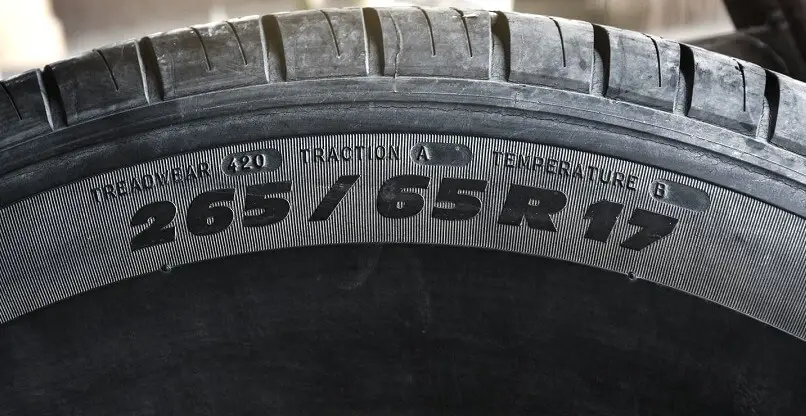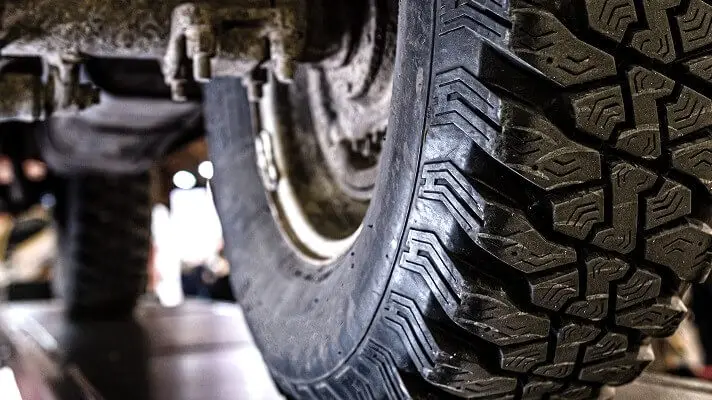How To Measure Tire Size

Tire measurements play a vital role in selecting the right tires for your vehicle. However, understanding tire measurements and how to interpret the numbers on the sidewall can be a daunting task for many.
This comprehensive guide will delve into the importance of measuring tires and provide step-by-step instructions on measuring tire diameter, width, aspect ratio, and tread depth. Armed with this knowledge, you can make informed decisions when purchasing tires and ensure optimal performance and safety for your vehicle.
Measuring Wheel Diameter
The wheel diameter is an essential measurement that determines the size of the tire’s wheel or rim. To measure the wheel diameter manually, follow these steps:
- Remove the wheel from your vehicle and place it on a flat, smooth surface like a table or the ground.
- Lay the wheel on its side, ensuring it is level and not tilted.
- Using a stiff tape measurer, measure the distance from the top to the bottom of the wheel, excluding the hub. Be sure to measure over the hub rather than to the side for an accurate calculation.
- Record the measurement as the wheel diameter.
It’s also important to check the hubcap diameter separately if you have one. Follow a similar process, measuring from the tip to the end of the hubcap, taking the measurement over, not around, the hubcap.

Tire Width & Aspect Ratio
Tire width and aspect ratio significantly affect the tire’s performance and fitment. To measure these specifications, follow these steps:
- Measure tire width: Place the tire vertically against a straight object if it doesn’t stand up on its own. Use a tape measurer to measure the width from one end of the tire to the other. This measurement will provide you with the tire’s width.
- Check the aspect ratio: The aspect ratio represents the height of the tire sidewall as a percentage of the tire’s width. On the tire sidewall, you’ll typically find the aspect ratio written after a backslash (“/”) symbol. For example, if the aspect ratio is 65%, it will be displayed as “/65.”
If the aspect ratio is not provided on the sidewall, you can manually calculate it by dividing the width by the tire’s diameter. Once you obtain a decimal value, convert it into a percentage to determine the aspect ratio. For instance, if the width is 4 inches and the diameter is 24 inches, the aspect ratio would be 60%.

Checking Tire Tread Measurements
Tire tread depth is a critical factor that affects traction, handling, and overall safety. Here are a few methods to measure tire tread depth:
- The penny test: Take a penny and insert it into a tire groove with Lincoln’s head facing down. Ensure that the penny is positioned in a way that Lincoln’s head enters the tread. If the tire grooves cover Lincoln’s hairline, the tread is considered safe and does not need replacement. However, if you can see Lincoln’s entire head or part of his hairline, the tread has worn too thin, indicating the need for new tires. Avoid purchasing used tires that show Lincoln’s hairline or entire head, as their tread is inadequate.
- The quarter test: Similar to the penny test, insert a quarter into the tire groove with George Washington’s head facing down. If the tire tread covers the top of Washington’s head, it is considered safe for driving. However, if the tread does not reach the top of Washington’s head, it’s time to replace your tires promptly.
- Indicator bars: Some tires have built-in indicator bars that become visible as the tread wears down. If you notice these bars partially or fully showing, it’s a clear indication that your tire tread has become insufficient and replacement is necessary.
Conclusion
Accurate measurement of tires is vital to ensure optimal performance, safety, and fitment. By understanding how to measure tire diameter, width, aspect ratio, and tread depth, you can confidently select the ideal tires for your vehicle.
Remember to measure the wheel diameter by laying the tire on its side, calculate tire width and aspect ratio, and perform regular tread depth checks using methods such as the penny or quarter tests.
By following these measurement techniques, you can make informed decisions when purchasing tires, enhancing your driving experience and road safety.

